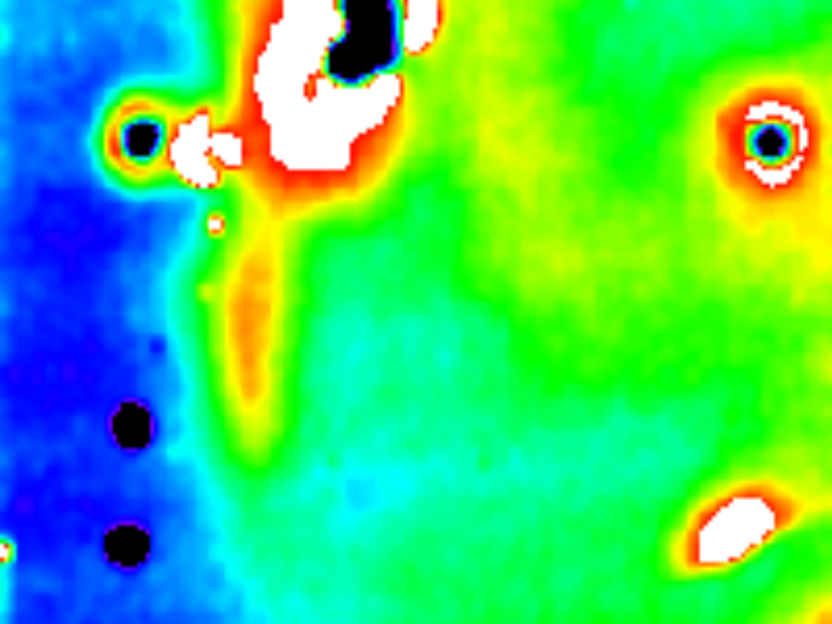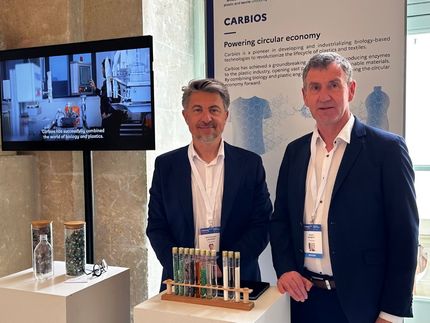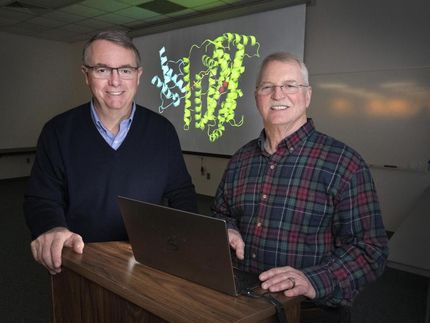A bionanomachine for green chemistry
With the help of an enzyme, the industry could produce valuable chemicals and drug precursors in an energy-saving and environmentally friendly conditions
Researchers at the Paul Scherrer Institute PSI have for the first time precisely characterised the enzyme styrene oxide isomerase, which can be used to produce valuable chemicals and drug precursors in an environmentally friendly manner. The study appears in the journal Nature Chemistry.
Enzymes are powerful biomolecules that can be used to produce many substances at ambient conditions. They enable “green” chemistry, which reduces environmental pollution resulting from processes used in synthetic chemistry. One such tool from nature has now been characterised in detail by PSI researchers: the enzyme styrene oxide isomerase. It is the biological version of the Meinwald reaction, an important chemical reaction in organic chemistry.
“The enzyme, discovered decades ago, is made by bacteria,” says Richard Kammerer of PSI’s Biomolecular Research Laboratory. His colleague Xiaodan Li adds: “But because the way it functions was not known, its practical application has been limited up to now.” The two researchers and their team have elucidated the structure of the enzyme as well as the way it works.
Simple mechanism for a complicated reaction
Microorganisms possess specific enzymes with which they can, for example, break down harmful substances and use them as nutrients. Styrene oxide isomerase is one of these. Together with two other enzymes, it enables certain environmental bacteria to grow on the hydrocarbon styrene.
The styrene oxide isomerase catalyses a very specific step in the reaction: it splits a three-membered ring in the styrene oxide consisting of one oxygen and two carbon atoms, a so-called epoxide. Thereby the enzyme is highly specific and creates only one product. It is also capable of converting a number of additional substances, producing important precursors for medical applications.
One particular advantage has to do with the fact that in many chemical reactions, both an image and a mirror image of a chemical compound are formed, which may have completely different biological effects. But this enzyme specifically creates only one of the two products. In chemistry this property is called stereospecificity – it is particularly important for the generation of precursor molecules for drugs. “The enzyme is an impressive example of how nature makes chemical reactions possible in a simple and ingenious way,” Xiaodan Li says.
Versatile
In the course of their investigations, which they conducted in part at the Swiss Light Source SLS, the PSI researchers discovered the enzyme’s secret: an iron-containing group in its interior, similar to the iron-containing pigment in our red blood cells. This haem group binds the epoxide ring, and that’s how it makes the reaction so simple and efficient. Other parts of the investigations were carried out by the group of Volodymyr Korkhov, also from the PSI Laboratory for Biomolecular Research and Associate Professor in the Department of Biology at ETH Zurich, using cryo-electron microscopy.
Xiaodan Li and Richard Kammerer feel certain that the enzyme will prove extremely useful in the chemical and pharmaceutical industries. “It is so far the only bacterial enzyme known to catalyse the Meinwald reaction,” Richard Kammerer emphasises. With the enzyme’s help, industry could produce precursors for drugs and important chemicals under energy-saving and environmentally friendly conditions.
Xiaodan Li adds: “The enzyme could potentially be altered so that it can produce a great many new substances.” In addition, the enzyme is very stable and thus is suitable for large-scale industrial applications. “It will certainly become a new, important tool for the circular economy and green chemistry,” the PSI researchers are convinced.
Original publication
Basavraj Khanppnavar, Joel P. S. Choo, Peter-Leon Hagedoorn, Grigory Smolentsev, Saša Štefanić, Selvapravin Kumaran, Dirk Tischler, Fritz K. Winkler, Volodymyr M. Korkhov, Zhi Li, Richard A. Kammerer, Xiaodan Li; "Structural basis of the Meinwald rearrangement catalysed by styrene oxide isomerase"; Nature Chemistry, 2024-5-14
Most read news
Original publication
Basavraj Khanppnavar, Joel P. S. Choo, Peter-Leon Hagedoorn, Grigory Smolentsev, Saša Štefanić, Selvapravin Kumaran, Dirk Tischler, Fritz K. Winkler, Volodymyr M. Korkhov, Zhi Li, Richard A. Kammerer, Xiaodan Li; "Structural basis of the Meinwald rearrangement catalysed by styrene oxide isomerase"; Nature Chemistry, 2024-5-14
Organizations
Other news from the department science

Get the chemical industry in your inbox
By submitting this form you agree that LUMITOS AG will send you the newsletter(s) selected above by email. Your data will not be passed on to third parties. Your data will be stored and processed in accordance with our data protection regulations. LUMITOS may contact you by email for the purpose of advertising or market and opinion surveys. You can revoke your consent at any time without giving reasons to LUMITOS AG, Ernst-Augustin-Str. 2, 12489 Berlin, Germany or by e-mail at revoke@lumitos.com with effect for the future. In addition, each email contains a link to unsubscribe from the corresponding newsletter.
Most read news
More news from our other portals
Last viewed contents
New method could revolutionize dating of ancient treasures
Carl Zeiss wins G.I.T. InnovationsAward 2012 for AURIGA Laser
ChemConnect Enhances Its Plastics Capabilities
Chiron Appoints Jack Goldstein President and Chief Operating Officer
Gardner Denver Medical acquires ILS and Zinsser Analytic

BASF invests in Oceanworks, a sustainable plastic sourcing platform - Startup offers platform for ocean, ocean-bound, and post-consumer-recycled (PCR) plastic sourcing

Thermal cameras snoop beneath surfaces to reveal materials’ secrets
Category:Chemical_companies_of_Austria




























































